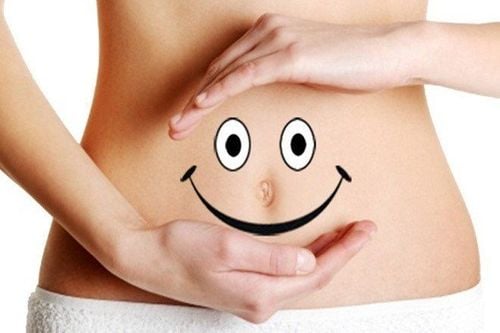What are the effects of drinking red beans? Is it better to eat whole red beans or drink red bean powder? What dishes can red beans make?... These are common concerns about one of these nutritious beans.
1. Nutritional value of red beans
When talking about the bean family with most of its nutritious foods, red beans certainly cannot be ignored. A cup of about 200 grams of cooked red beans contains the following nutrients:
- Calories: 294;
- Carbohydrates: 57g;
- Protein: 17.3g;
- Fat: 0.2g;
- Fiber: 16.8g;
- Manganese: 1.3mg (66% DV);
- Phosphorus: 386mg (39% DV);
- Potassium: 1,224mg (35% DV);
- Copper: 0.2mg (34% DV);
- Magnesium: 120mg (30% DV);
- Zinc: 4.1mg (27% DV);
- Iron: 4.6mg (26% DV);
- Thiamin: 3mg (18% DV);
- Vitamin B6: 0.2mg (11% DV);
- Riboflavin: 0.1mg (9% DV);
- Niacin: 1.6mg (8% DV);
- Calcium: 64.4mg (6% DV).
*DV is the recommended amount of nutrients your body needs to absorb every day.
Both Modern Medicine and Traditional Medicine recognize red beans as a food source with high nutrient content, on average, bringing many health benefits.

2. What are the effects of red beans?
Red beans offer several notable health benefits, including:
Supports control of diabetes, blood pressure, and cardiovascular diseases
Animal studies have shown that the protein in red beans can inhibit α-glucosidase, an enzyme responsible for breaking down complex carbohydrates like starch and glycogen. This makes red beans an excellent addition to control as well as prevention for diabetes.
Additionally, regular consumption of red beans promotes heart health due to their fiber, folate, potassium, magnesium, and vitamin B content. The fiber helps regulate cholesterol levels, while potassium aids in the dilation of blood vessels, improving blood circulation and reducing blood pressure, which alleviates stress on the heart.
Enhances immune function
Red beans are rich in antioxidants, which play a crucial role in fighting disease and promoting overall health. Research has identified at least 29 different antioxidant compounds in red beans, including bioflavonoids known for their potent antioxidant and anti-inflammatory properties.
Supports muscle strength and weight loss
One cup of red beans contains approximately 17.3 grams of protein, a vital nutrient for building and maintaining strong muscles. Combining regular exercise with a diet rich in fiber and protein not only helps improve body composition but also aids in reducing excess fat.
Improves skin vitality
Facial treatments that combine red bean powder with natural ingredients like fresh milk, yogurt, honey, or coconut oil can be both gentle and effective for enhancing skin smoothness and brightness.
To maximize nutrient absorption when using a red bean powder mask, it's essential to thoroughly cleanse the facial skin beforehand.

3. Remedies and dishes made from red beans
Treatment of Acute Nephritis: 60g red beans, 1 carp, 500g squash, scallions. Make a red bean carp soup, consuming both the broth and the pieces. Eat hot, once a day for 5-7 days.
Treating Edema and Urinary Incontinence: 30g red beans, 30g boron seeds, 50g regular rice. Soak the red beans and cook them first. Then, add the plain rice and boron seeds, cooking until soft. Sweeten with sugar. Consume throughout the day.
Heat-clearing, Hydrating, Calming, Sedative Medicine: 30g red beans, 8g ginseng, 8g dong quai, 1 pig heart, and enough shiitake mushrooms. Everything is stewed until soft, eat it and drink water.
Treatment of Glomerulonephritis: 90g red beans, 60g corn silk, 10g red apple, sugar to taste. Boil the ingredients to prepare a drink. Consume throughout the day (treatment duration is 1-3 months).
Treating Diabetes, Rashes, and Boils: 50g red beans, 1kg squash. Cook the red beans with water until soft, then add the squash. Eat and drink water.
Nourishing Blood, Strengthening the Spleen, and Improving Health: 30g red beans, 2 quails, 3 slices of fresh ginger. Stew until soft, season with spices, and consume hot.
Easy-to-cook and nutritious dishes from red beans:
- Red bean sweet soup features the sweetness of rock sugar, the richness of coconut milk, and the natural sweetness of red beans. Enjoy it hot or cold (with ice cubes) for a refreshing treat on warm days.
- Red bean porridge combines red beans with ingredients like coconut milk, minced meat, or fresh shrimp. The porridge should be neither too thick nor too watery, offering a delightful sweetness from the red beans paired with the chewy texture of shrimp or meat.
- Red bean dumplings have become a convenient breakfast favorite for busy office workers and schoolchildren. With a soft white dumpling skin enclosing a sweet red bean filling, they are easy to eat and enjoyable.
Please follow the website (www.vinmec.com) for more information and guidance on health care, which we will update regularly.
Please dial HOTLINE for more information or register for an appointment HERE. Download MyVinmec app to make appointments faster and to manage your bookings easily.













